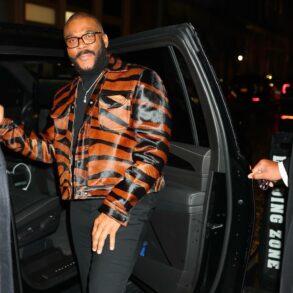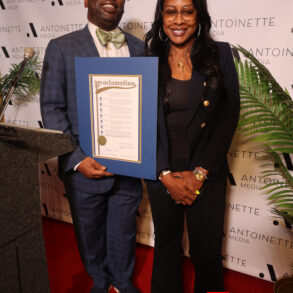“You know what I used to love?” a friend asked recently. “Catalogues. Old-school catalogues that you sat down and read and ordered from.” Good news for her: the print catalogue is making a comeback, along with print publications in general.
I know, I know: you’ve heard it before (maybe from me). There’s no story the print media loves more than the one about how relevant we are. But honestly, the catalogue is back. In the UK, high street chain Boden is bringing back its beloved print catalogue after declining sales from the more mature end of the market, who – surprise, surprise – love seeing products in print. Selfridges, too, is launching a 72-page shopping zine called Yellow Pages.

They weren’t just preludes to a new season, but a way to show customers what the brand stood for. Simon Letch
In the US, Barneys is planning a magalog (a hybrid of a traditional magazine and a catalogue) whose contributors will include former Elle editor-in-chief Robbie Myers and former GQ creative director Jim Moore. And Nike Women recently partnered with streetwear label HommeGirls on a limited-edition newspaper that was circulated at New York Fashion Week. In Australia, resort label Matteau delivered a hefty magazine-style lookbook to VIPs and media recently. It was lush and beautiful and, yes, it made me want to buy a pair of swimmers.
And some brands never got rid of their catalogues at all: Amazon (yes, that Amazon) has a toy catalogue it sends out to millions of customers before Christmas every year, and British luxury label Me + Em has a magalog it has been posting for more than a decade.
Historically, the release of your catalogue could become a real moment, as well as a way to ensure that retailers had enough stock (as orders would come in within a week of distribution, allowing a level of certainty). In the US, catalogues from J. Crew and Ralph Lauren were legendary – so much so that J. Crew has made a range of limited-edition clutches adorned with old catalogue covers.
They weren’t just preludes to a new season, but a way to show customers what the brand stood for. They were also a way to capture clients who didn’t necessarily live close to a physical store. But catalogues are expensive. Paper can be wasteful. And you all know what happened next.
But you know what else has become expensive? Social media. As more brands post more content, it’s getting harder to stand out. Suddenly, a printed product that can hang around for weeks or even months, taking up real estate on someone’s kitchen bench or coffee table, which has been made with care by experts, seems like the kind of investment brands want to make again.
There is an element of nostalgia, but I think there’s also something that a printed publication can offer that digital simply can’t: intention. Reading a magazine or catalogue is an act of will, it’s something you’ve actively chosen to engage with. You’ve picked it up, you want to be informed and entertained by it. You probably want to buy something.
And so I have a prediction: print catalogues will return, not just for the reasons I’ve listed above, but because, with all this expertise behind them, they will look good and influencers will love them – and they will post about them online. Catalogues as the new unboxing videos? I see it. You only need to look at Kelsey Russell, a 23-year-old TikTok creator who has found fame by reading out the printed New York Times to her 70,000 followers, for proof of concept. For her young audience, print is novel. It’s fun. It’s not old, because it was never normal for them. I have a feeling we’ll start to see print catalogues on social media soon – irony of ironies, but one that feels very 2023.
It reminds me of something Balenciaga designer Demna recently said about the celebrification of fashion: “Because at the end of the day, they’ll take an influencer from TikTok who has 150 million followers and put that person as creative director. But that person can create nothing apart from attention.” The influencers can bring attention. The experts can bring everything else.
The November issue of AFR Magazine, including the Young Rich List, is out on Friday, October 27 inside The Australian Financial Review. Follow AFR Mag on Twitter and Instagram.
More from Sams
- The four women who proved fashion can increase your wealth and power Cindy Crawford, Christy Turlington, Naomi Campbell and Linda Evangelista brought their industry to life and gave it dimension beyond the runway.
- Made a regretful Euro holiday purchase? You’re not alone There’s a reason hotels and fashion designers collaborate often – when you’re on holiday, you’re primed to purchase.
- Thin is in but Ozempic has a big fat problem When the diabetes drug that aids weight loss arrives in Australia, how does the fashion industry respond? With good old capitalist hustle.
- What your novelty handbag is telling the world From pigeons to palm-sized, cute and quirky bags are having a moment. Maybe it’s because you’re ready to play with fashion again.
- The Met Gala used to need Vogue. Now it’s the other way round The event was once about promoting fashion history. These days, it’s about spruiking a magazine.
- Fashion’s hottest accessory will make you look far more powerful Every few seasons, a new body part appears in the collections of designers – and the appendage du jour is the shoulder.
- The industry where nepo babies are not only common, they’re expected The hottest accessory in fashion is a famous surname. For those without one, an XY chromosome helps.
- Why it’s fun to trawl the belongings (and wardrobes) of the famous The chance to dip into someone’s personal archives has become like catnip to a certain fashion-obsessed segment of the internet.
- Surprise Instagram star shows not all influencers are in it for money It feels like every year there is a whisper that influencers are dead. The party isn’t quite over yet though, thanks to one breakout fashion influencer.
This post was originally published on this site be sure to check out more of their content.








